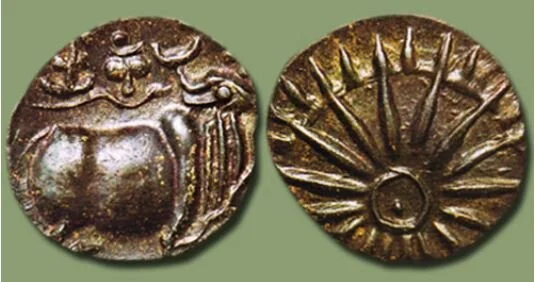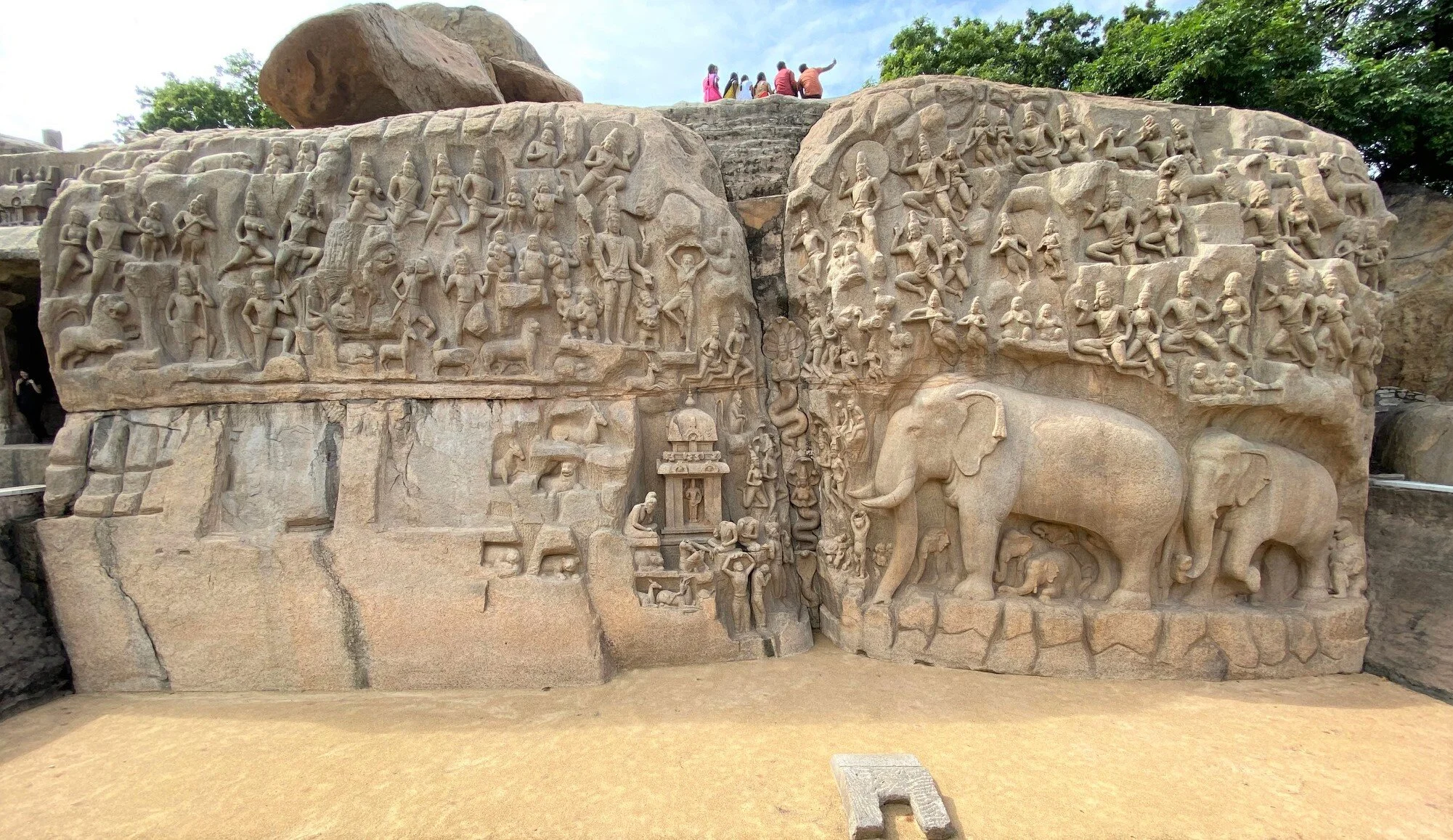Pallavas ? Who are they ?
Breathing Life into Monolith Block at Mamallapuram, Tamil Nadu (Photo Credit : VigneshG)
Hi There!
I see you are reading this blog post on a dynasty that ruled South India over a thousand years ago. Isn’t it fascinating that you, the reader, and me, the writer, are located in two different parts of the world and yet we feel so...connected.
However, in a modern, interconnected world we are bombarded with information from different parts of the world. We are so used to it that information is just another cheap commodity for us. Humans produce trillions of kilobytes of data every day which is simply disposed of by us with a flick of a finger on an electronic screen!
So why should info on the Pallavas of Kanchipuram hold any significance for us?
Here is the answer.
Before the advent of European colonialism and the wave of globalization that seems so second-hand to us today, there was a wave of contact between ancient civilizations that facilitated trade, a massive flow of foreign exchange, the spread of religion and cultural interchange. This was done via the maritime Silk Road where ships sailed across seas and oceans to foreign lands to conduct trade and establish cultural relations.
Here came the Pallavas who rode this wave better than pro-surfers in Miami. This dynasty of kings was a crucial intermediary that linked continents! From the tropical islands of South East Asia to the desert lands of Arabia to the powers in Europe, the flow of goods, money and information surged through their port cities at the height of their power.
For instance, the Pallavas in India exported premium goods like precious stones to S.E. Asia and imported goods like aromatic woods (eg. sandalwood) from them. They paid in Indian coin and received currency from S.E. Asia. On the other hand, they exported some of these S.E. Asian goods and Indian goods like cotton and textiles to Europe. They received European currency for their exports.
In the process, traders from Europe picked up crucial information on the happenings in S.E. Asia and India and transmitted the information to Europe. Even vice-versa was true, but for the Pallavas, the Europeans were not their priority customer. It was a time when the balance of power tipped in favour of Asia. The Pallavas had fantastic trade relations and partners in Asia, the priority being given to the Chinese.
The Pallavas used the maritime superhighway to spread their influence in S.E. Asia where the residents of the latter emulated the Pallavas in their style of clothing, writing and building. Think of it as an ancient fashion trend sweeping the region!
Foreign exchange in the form of European currency and currency from S.E Asia poured into the coffers of the Pallavas. In the process, a consumer in Europe consumed premium S.E. Asian goods thanks to Pallavas!
https://www.mintageworld.com/media/detail/2612-pallava-coinage/
Pallava coinage shows symbols like the bull which is often combined with other symbols like the svastika, srivatsa, the sacred lamp, kumbha, chakra, trisula, and the ship and horse.
https://www.mintageworld.com/media/detail/2030-bull-on-pallava-coin/
Bull on the obverse is the most common symbol found on the Pallava coins. This indicates that the Pallavas were the follower of Lord Shiva. Pallava bull is very typical and is commonly seen on their monuments. The early coins of Pallavas are of Lead, copper and bronze. Silver and gold coins are rarely found.
Some information remains embedded in your mind forever in the form of knowledge. Like that time in history class when you were told that India was once called “Sone ki Chidiya” or the “Golden Bird” in the Known World. That is because it was Indian dynasties like the Pallavas who spread the word in the 7th and 8th Centuries- “We are here and we are now.”
In this era of exploding information, it takes some real effort for a company to establish a brand when people simply encounter too many brands. But the Pallavas left behind a lasting brand in the form of some unique architecture. Visit anything from the Jalashayana (Shore) Temple in Mamallapuram to the Kailasanathar Temple in Kanchipuram.
Just visit Mamallapuram, their financial base of operations. The tourism industry of this place is solely dependent upon the monuments of these enterprising kings. Ask any tour guide and they will usher you into the world of the Pallavas. After all, they are the incidental benefactors of the kings, making their living off the Pallavas!
If you have the seed of curiosity sprouting in your head, stay tuned with us. This is information worth remembering.
May well seem like chasing a Dynasty down from 700s… the treasure hunt continues……
VigneshG and RamK
Absolute Poetry in Stone :
According to wikipedia : Measuring 96 by 43 feet (29 m × 13 m), it is a giant open-air rock relief carved on two monolithic rock boulders. The legend depicted in the relief is the story of the descent of the sacred river Ganges to earth from the heavens led by Bhagiratha. The waters of the Ganges are believed to possess supernatural powers.



